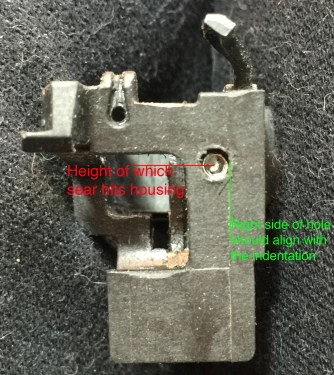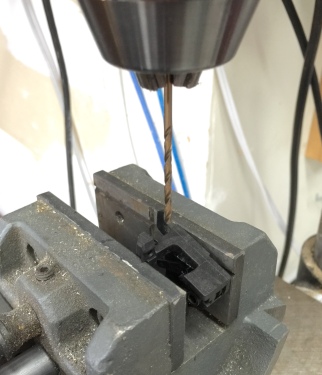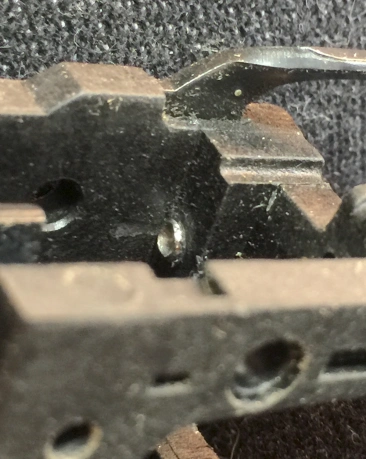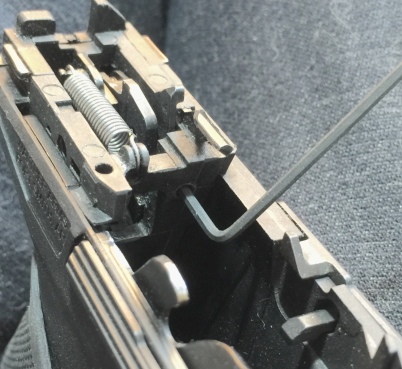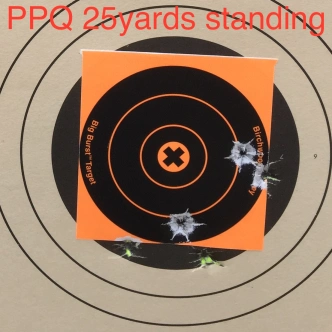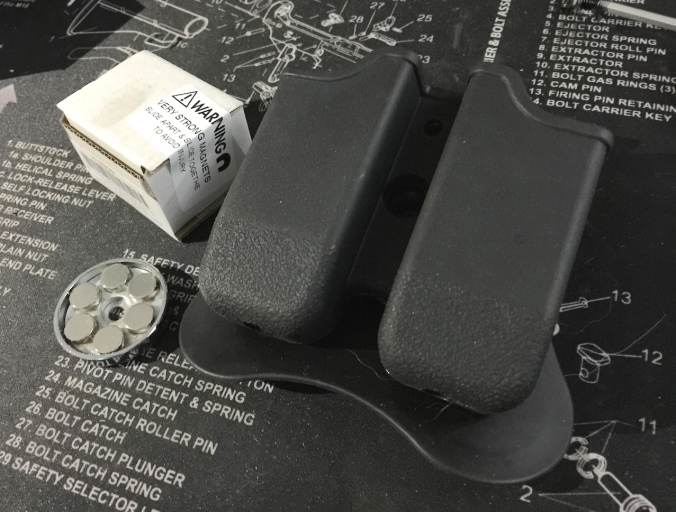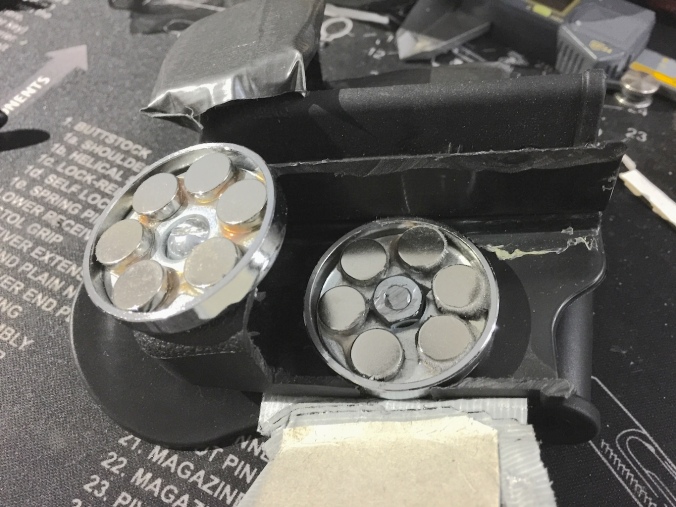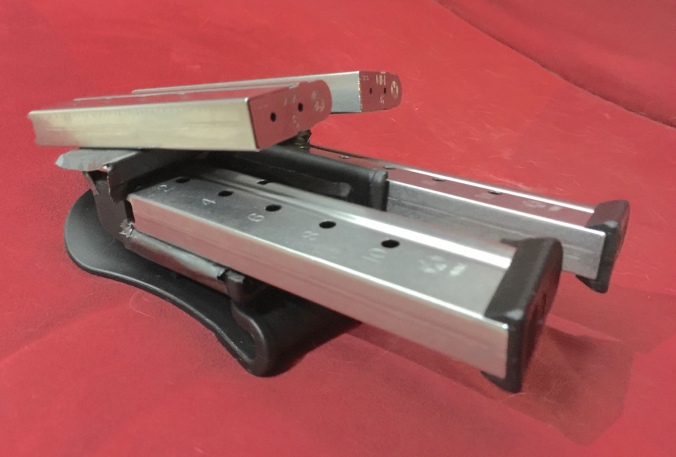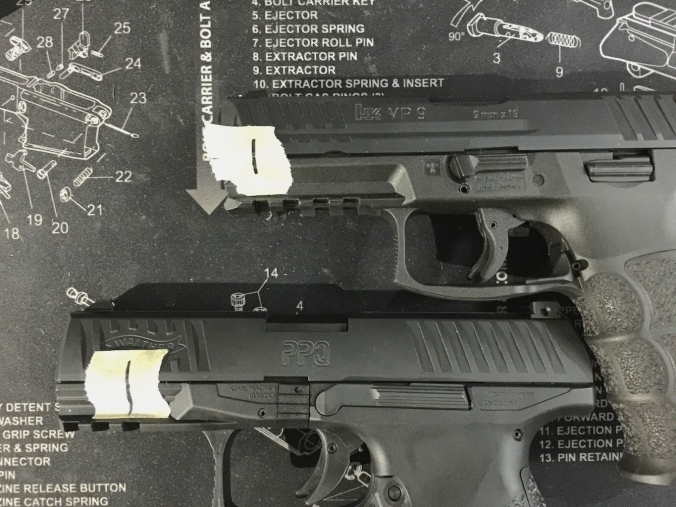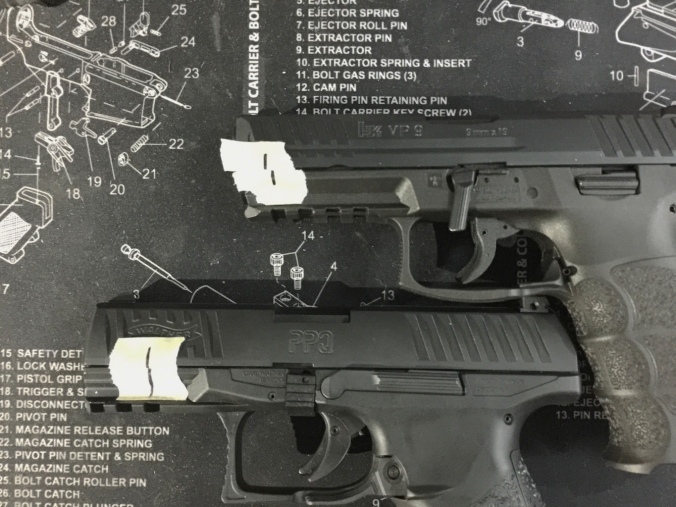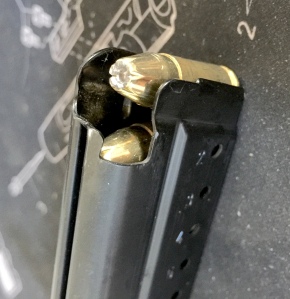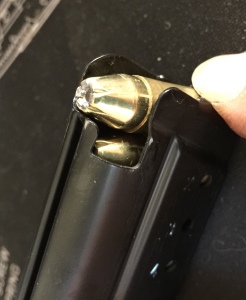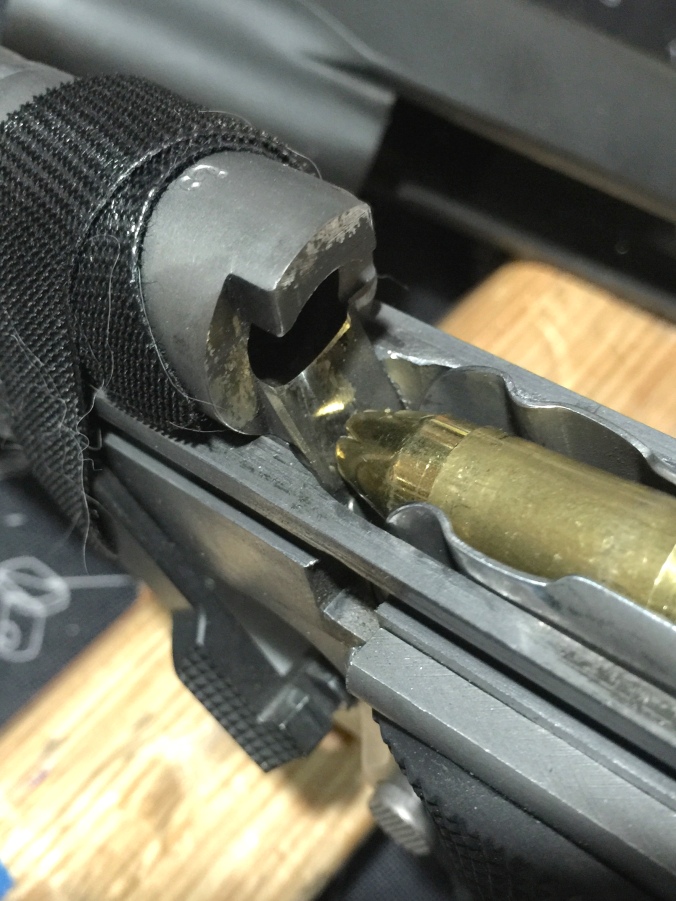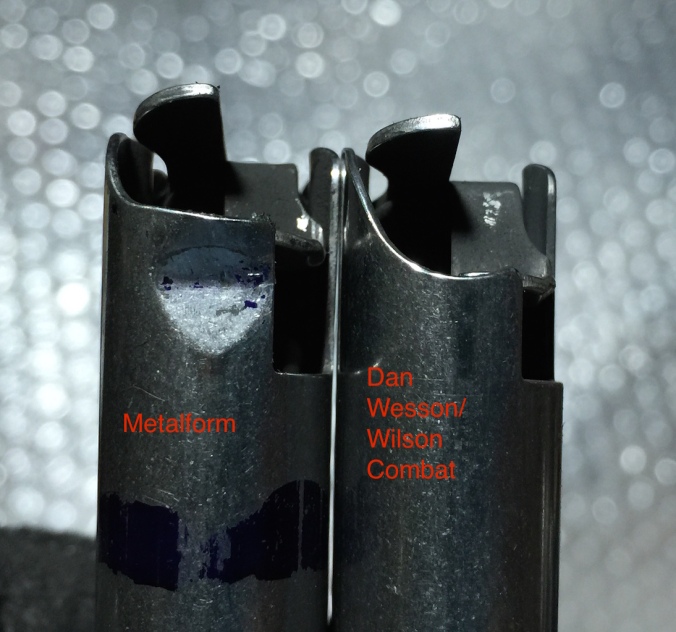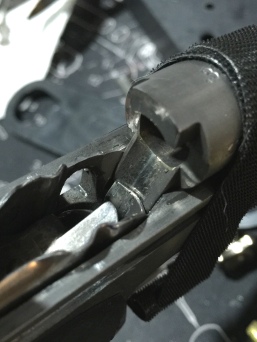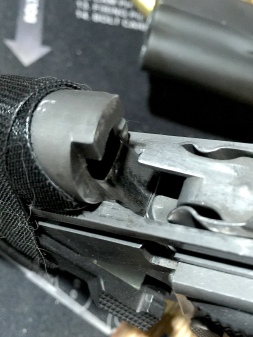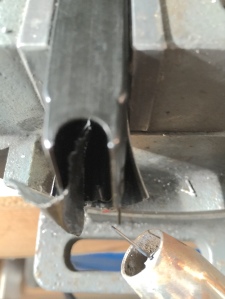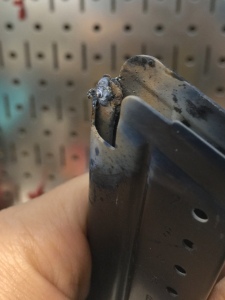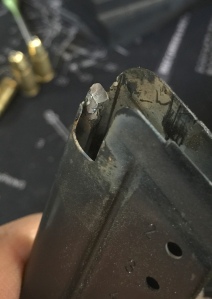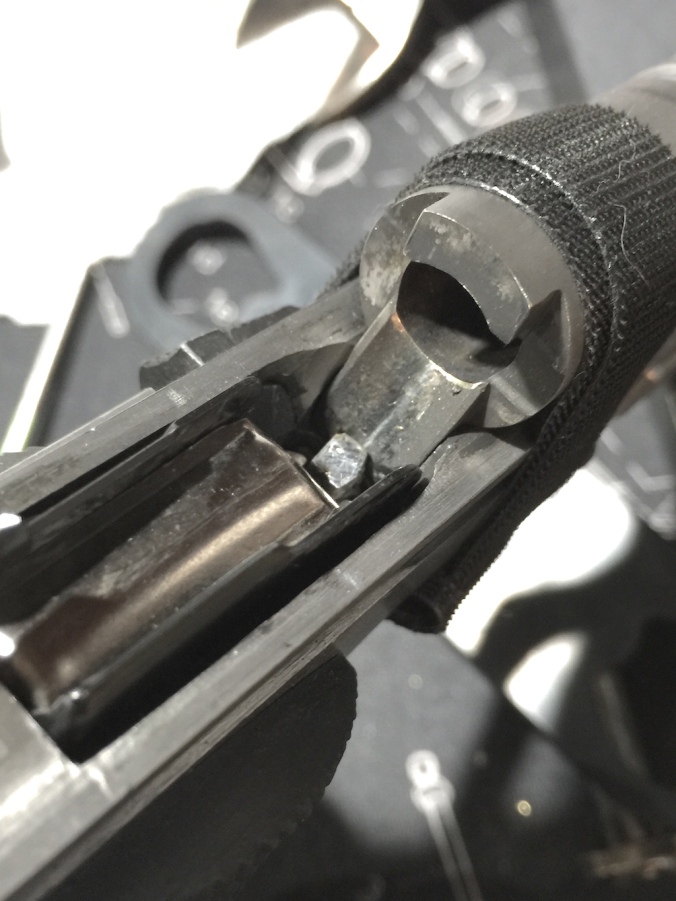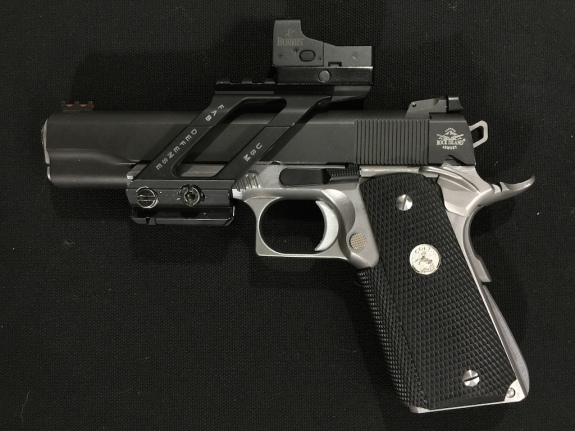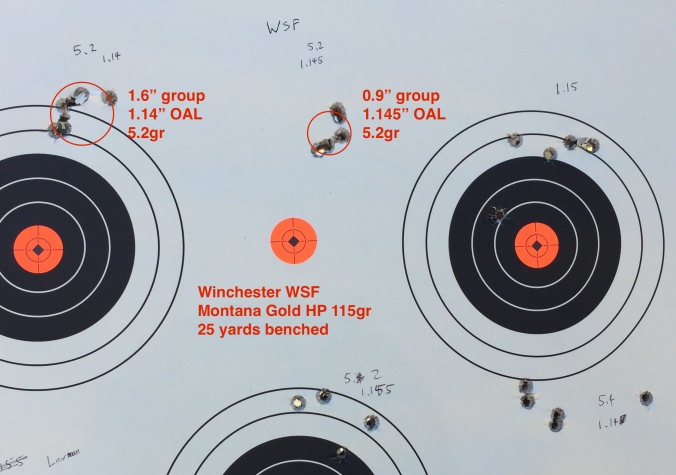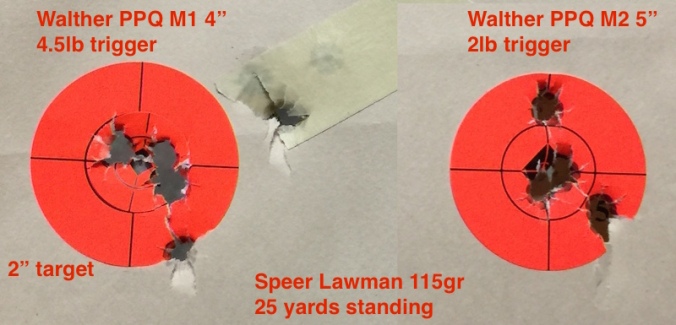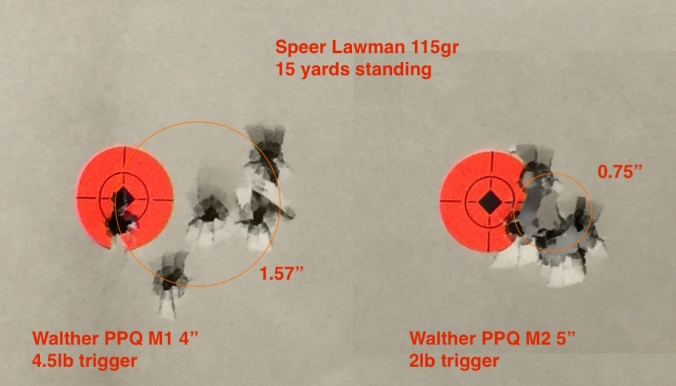This is for the 9mm and 40 cal models only. 45 ACP model uses different springs.
In my first PPQ trigger job I’ve used a spring from a pack of HomeDepot assorted spring kit, and it yielded a 2.5lb trigger. The trigger is great for bullseye but is inappropriate for action shooting. Many had expressed interest in a 3.5lb trigger, so I set out to find a spring that would do exactly that.
Introduction
Here is the spec of the PPQ’s sear extension spring:
- length: 0.75″ (19mm), 16mm on 45ACP
- outer diameter: 0.180″ (4.57mm)
- wire thickness: 0.022″ (0.559mm)
So the goal here is to find something with similar dimension but with a thinner wire thickness. I’m making the assumption here that the material is music wire.
It’s actually much harder than I thought to buy a spring at the specific size I want. Most manufactures have a minimum order of 50 to 100 springs, or general component stores don’t have something this small or at the thickness I want. After an evening of searching I found this place called Sodemann Springs. (link on the next page)
I ordered a wire thickness of 0.51mm, and with lengths 19mm and 15.75mm, as well as a 0.55 spring that’s 15.75mm long.
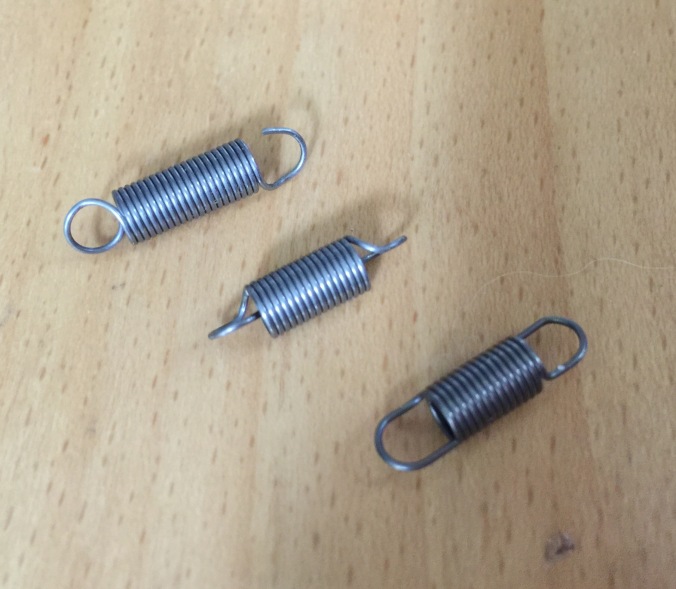
The loop on each end is closed off, so I needed to open one of the ends up to fit into the sear assembly. You can see that on the top spring shown above.
As it turns out, the 0.51mm spring that’s 19mm did the trick. It gave me a 3.5lb pull.
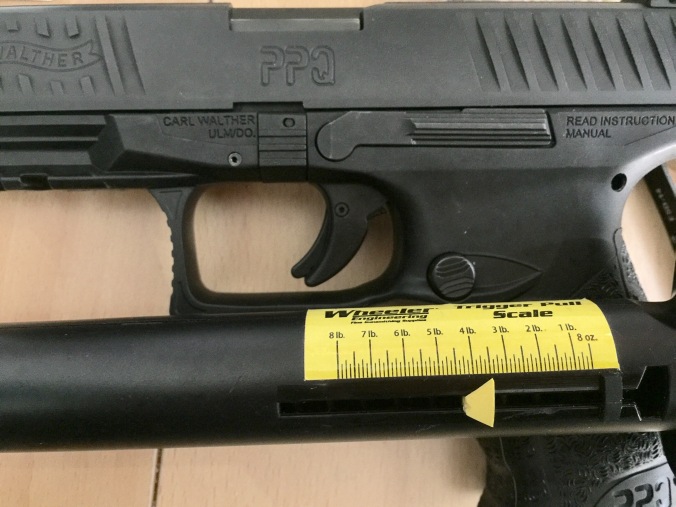
Note: Your mileage may vary as I’ve polished my internals, which might drop the poundage by a little.
And for those who are interested in making this mod, it’s an easy process that takes only minutes.
Parts and Tools
DISCLAIMER: No matter how easy the mod is, any modification which involves adjusting a firearm comes with the potential of compromising the safety of your firearm! Refrain from modding if you have no prior experience, and seek professional help instead. Also, any modified firearm should not be used outside of a firing range.
There are now multiple sources available for ordering the springs. I’ve put together a spreadsheet of all the spring retailers that I can find online. You can access it here:
Spring Retailer Spreadsheet
(https://docs.google.com/spreadsheets/d/1pbUnT7q16B2AMA5GxBLiaHF-Z84RF1xFNYc7zm4-R6o/edit?usp=sharing)
If you’re on a budget, you can order from Ebay and get a set of springs for $10
Ebay Store Link (3.5lb)
Shipping takes about 10 days.
Mc Master offers a stainless steel spring that is the exact dimension of the factory spring, which is about a pound lighter. It’ll cost about $16, not bad at all
McMaster Purchasing Link (3.5lb)
Then there’s trusty Amazon who sells a pack of 10 for around $23.
Lastly, there’s Sodemann spring who has a great selection of springs. Unfortunately they are based in Norway. There’s a minimum order of $20 and shipping is $19. This place only makes sense if you’re buying a set of springs at different weights.
http://www.sodemann-springs.us/online-shop/search?pid=E01800200750M (3.5lb)
http://www.sodemann-springs.us/online-shop/search?pid=E01800240750M (5lb)
http://www.sodemann-springs.us/online-shop/search?pid=E01800260750M (6lb)
If you have the 45ACP version, here’s the 3.5lb spring
http://www.sodemann-springs.us/online-shop/search?pid=E01800180620S
Thanks to “imanoldfart” on Walther forums, he took the mod a step further and started replacing the firing pin block spring:
http://www.sodemann-springs.us/online-shop/search?pid=C00880100440S
What this mod does is that it’ll lower the trigger pull force that happen half way during up-take, providing a even smoother trigger pull before hitting the break!
Tools you’ll need:
- 3mm punch (optional, only if you remove sear block)
- needle nose plier
- bolt cutter, wire cutter or dremel with disk grinder
- tweezers
Step by Step Instructions – Quick Mod
Note that there are two sets of instructions. This quick mod only involves the slide removal. If you have trouble removing the extension spring, refer to the second set of instructions.
Step 1 – Remove the slide, and locate the extension spring
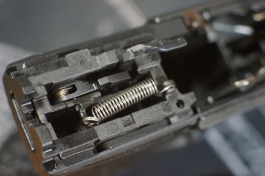
Step 2 – Remove the extension spring with a pair of needle nose pliers or tweezers. Note that the coil on the front side is wrapped up really well. Remove the back coil first so you can move the spring around to find the best angle in pulling it out of the sear casing. In the second picture you can see how I find an angle to help remove the spring.
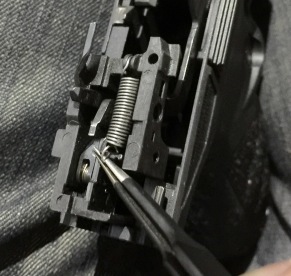
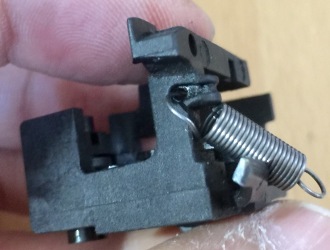
Step 3 – Prepare the new spring. Straighten out the very end of the spring, and then you’ll need to cut the loop end short so you can fit it into the sear assembly housing easier. Cut with a Dremel or a mini bolt cutter. Use wire cutters only if there’s no other choice.
Note that music wire is very hard (C41 – 60), so it’ll dent even the best wire cutters (C63-65). If you have to use a wire cutter, use a cheap, small bolt cutter and not a wire cutter.
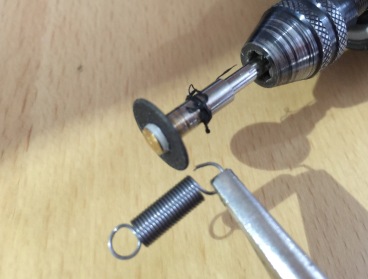
Step 4 – Assemble the new extension spring to the sear block. It should be easier than removing the spring in comparison.
For those who are comfortable taking things apart and have a 3mm punch handy, here are the instructions for taking the sear block apart.
Step by Step Instructions – Sear Block Removal
Step 1 – Remove the 3mm pin behind the slide lock (if I need to tell you to remove the slide, this guide ain’t for you 🙂
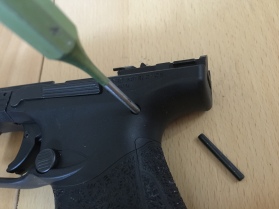
Step 2 – Slide out the sear assembly housing. Orient the right side of the pistol facing up, because there is a metal part (trigger bar guide) and would come loose. Now’s also a good time to clean your sear housing. (see how easy it is on the PPQ?)
Step 3 – Prepare the new spring. Straighten out the very end of the spring, and then you’ll need to cut the end short (about 2mm) so you can fit it into the sear assembly housing easier. Cut with a Dremel or a mini bolt cutter. Use wire cutters only if there’s no other choice.
Note that music wire is very hard (C41 – 60), so it’ll dent even the best wire cutters (C63-65). If you have to use a wire cutter, use a cheap, small bolt cutter and not a wire cutter.

Step 4 – Now you can fit the spring into the sear housing. It’s going to be a tight fit. I found it easier to place the spring at a 45 degree angle at the beginning.
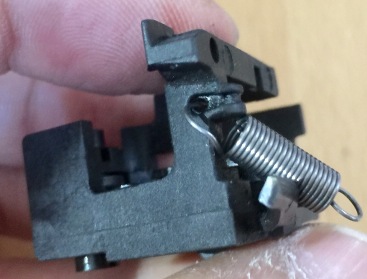
Step 5 – Reassembly. Fit the housing in part way through, then take your tweezers and slip the spring back into place.
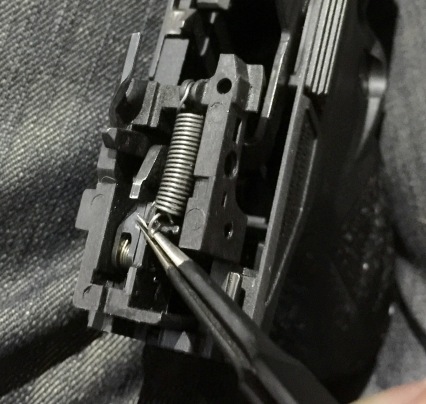
Hammer the pin back and install the slide and you’re all set.
Testing
It goes without saying but you’ll get to feel the new trigger by dry firing the pistol. Do this a couple of times, also rack and slam the slide back to battery and make sure the spring will stay in place. Once you’re comfortable with how the trigger feels, have fun at the range!
The PPQ is really easy to take apart compared to many pistols I dealt with, and all these non invasive mods make the PPQ one of the most flexible pistols out there. Hope you find this useful! Have fun shooting!

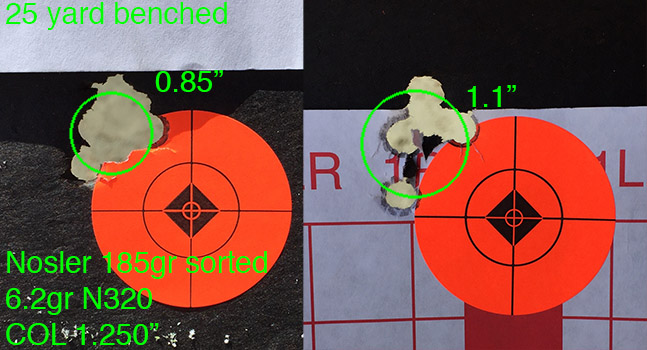
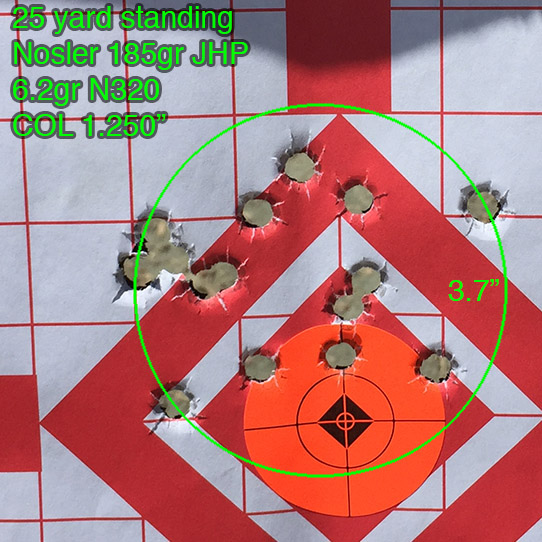
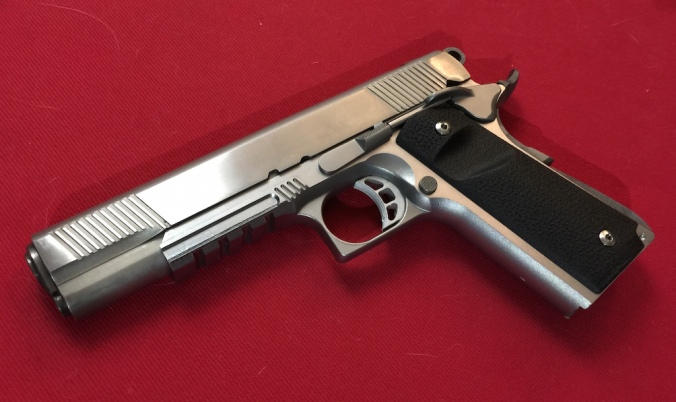
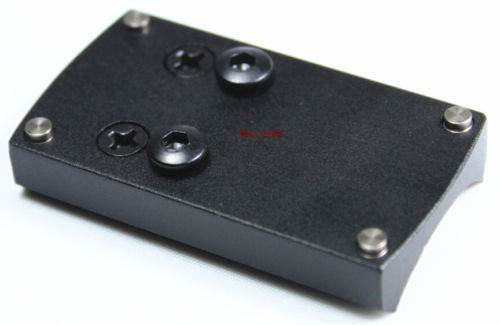
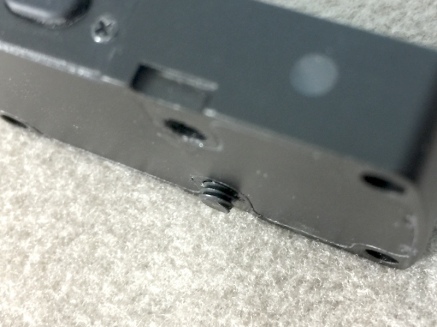
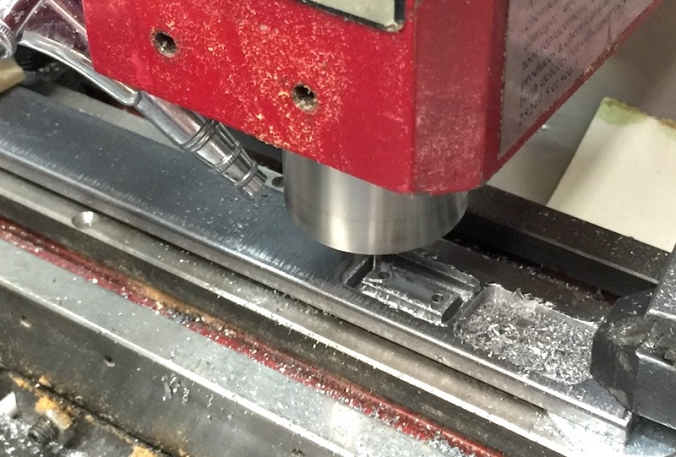
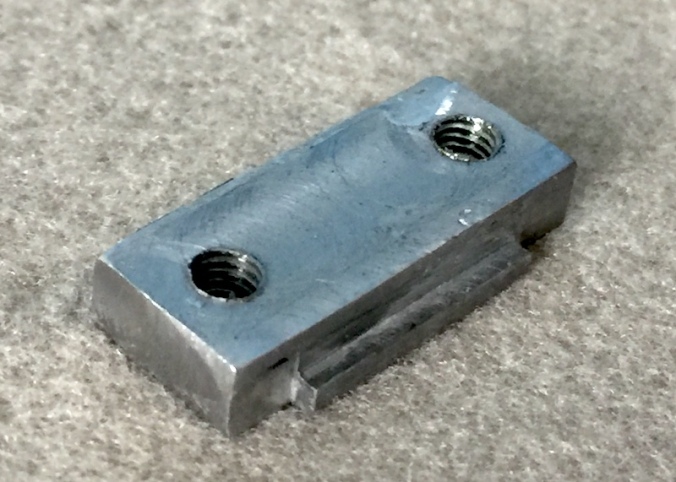


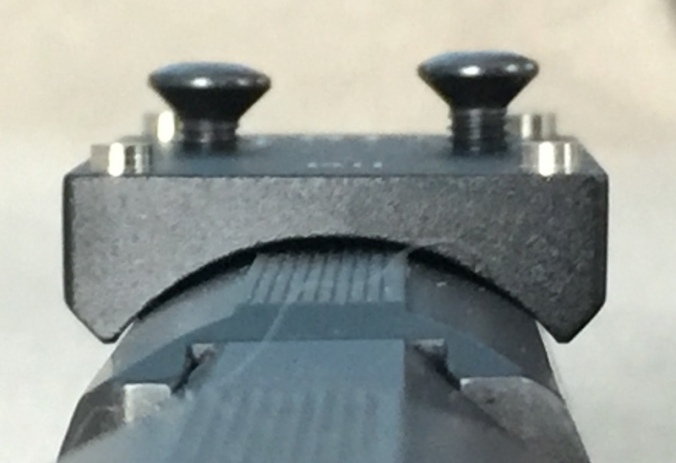


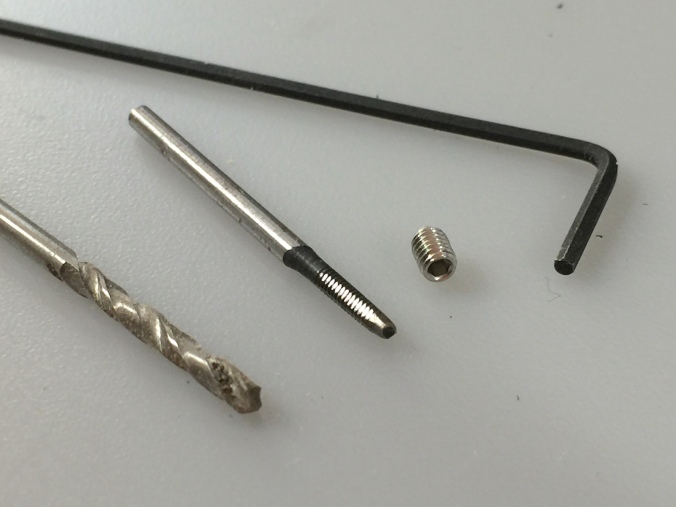 First you’ll need:
First you’ll need: